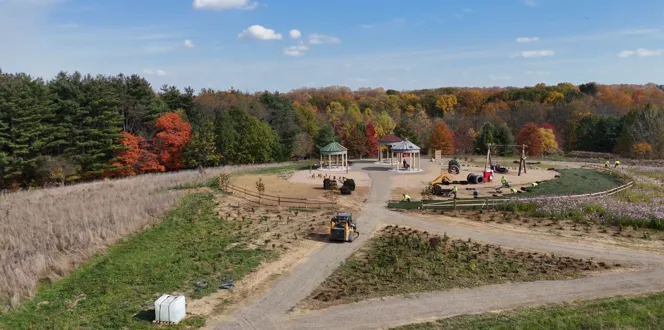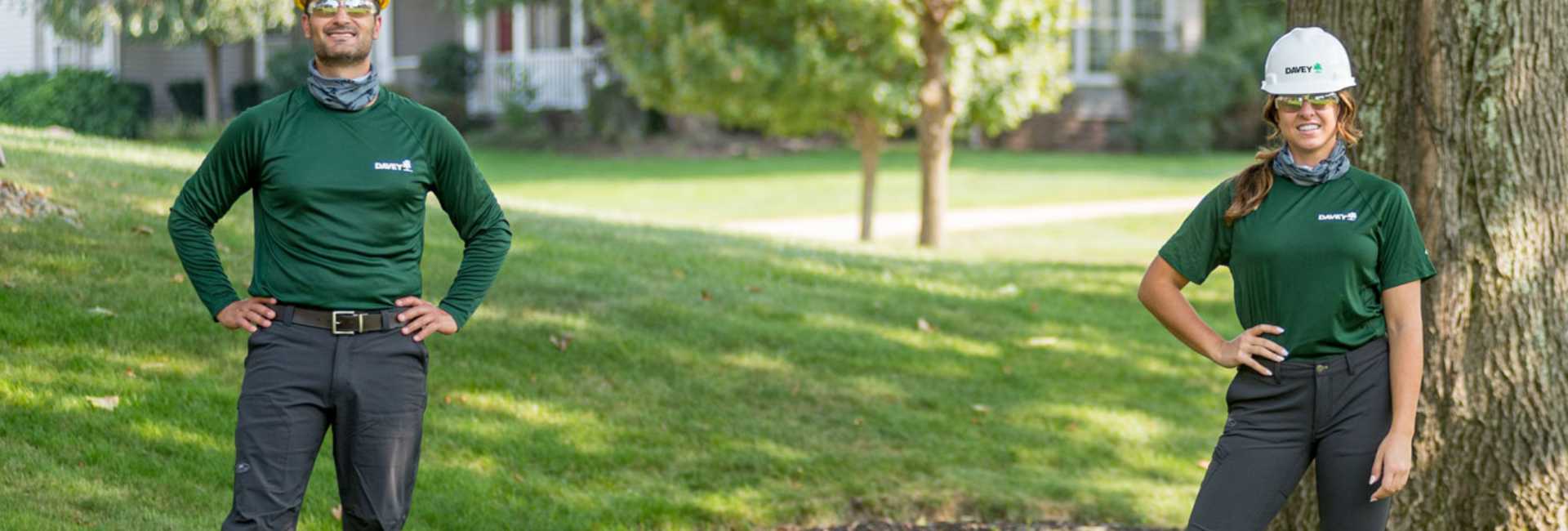Griswold Creek
Removal of riparian vegetation and urbanization within the Griswold Creek watershed has caused increased runoff, elevated water temperatures, and increased water flows. DRG worked with Geauga Parks District to restore the stream, improve habitats, and increase floodplain storage.
Project Narrative:
Griswold Creek flows through Geauga Park District’s Bessie Benner Metzenbaum Park. Over time, the removal of riparian vegetation and urbanization within the watershed has contributed to increased runoff, elevated water temperatures, and increased water flows. These issues have led to downcutting of the Griswold Creek channel and the loss of connectivity to the floodplain. To address these problems, the District applied for and received a U.S. EPA Great Lakes Restoration Initiative grant for stream and floodplain restoration.
DRG worked with the park to design the restoration plan. Marks Construction, with oversight from DRG, implemented restoration of 1,345 linear feet of Griswold Creek and the adjacent riparian corridor. The project included several measures:
- Installation of eight riffle grade control structures to encourage natural deposition, add habitat, and elevate the channel to better engage the floodplain.
- Regrading and stabilization of the bank in areas of erosion.
- Excavation of shallow pools adjacent to the stream to create habitat and increase storage within the adjacent floodplain.
- Treatment of non-native vegetation along the riparian corridor.
- Seeding of the riparian corridor with a native riparian seed mix.
- Bioengineering of the streambank utilizing 1,185 live stakes to revegetate and anchor the soil.
- Planting of 900 bare root and 990 container plants of native tree and shrub species to establish a shaded riparian corridor with habitat and food sources for wildlife.
Creating Healthier Habitats
Upon completion of the project, our design/build team achieved the restoration goals at Griswold Creek. Floodplain storage has increased with the excavation of the areas adjacent to the stream. Downcutting of the stream has been managed with the installation of grade control structures. Water quality has greatly improved with the decrease in sediment that was formerly eroding into the stream, and by shading the channel with the planting of woody plants along the stream banks. Habitat within the stream and in the riparian corridor has significantly improved with the in-stream structures, the adjacent wet pools with woody debris, the control of non-native species, and the planting of a diversity of woody plants.
DRG was the lead contractor on this project. DRG provided project management, permitting and agency coordination, water resource assessments, conceptual design, construction oversight, planting and seeding, invasive vegetation control, and monitoring. DRG and Marks Construction has over 13 years of experience working together as a design/build team. During those years, we have successfully completed projects that have provided our clients with durable bank stabilization and restoration, and enhanced in-stream and riparian habitat.





